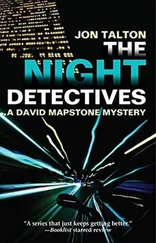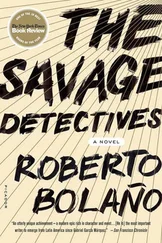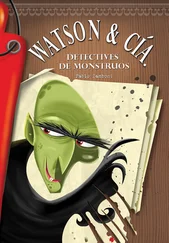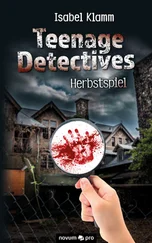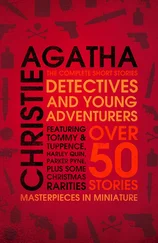Ivan Vladislavic - 101 Detectives
Здесь есть возможность читать онлайн «Ivan Vladislavic - 101 Detectives» весь текст электронной книги совершенно бесплатно (целиком полную версию без сокращений). В некоторых случаях можно слушать аудио, скачать через торрент в формате fb2 и присутствует краткое содержание. Год выпуска: 2015, Издательство: And Other Stories Publishing, Жанр: Современная проза, на английском языке. Описание произведения, (предисловие) а так же отзывы посетителей доступны на портале библиотеки ЛибКат.
- Название:101 Detectives
- Автор:
- Издательство:And Other Stories Publishing
- Жанр:
- Год:2015
- ISBN:нет данных
- Рейтинг книги:4 / 5. Голосов: 1
-
Избранное:Добавить в избранное
- Отзывы:
-
Ваша оценка:
- 80
- 1
- 2
- 3
- 4
- 5
101 Detectives: краткое содержание, описание и аннотация
Предлагаем к чтению аннотацию, описание, краткое содержание или предисловие (зависит от того, что написал сам автор книги «101 Detectives»). Если вы не нашли необходимую информацию о книге — напишите в комментариях, мы постараемся отыскать её.
and
, invites readers to do some detective work of their own. Each story can be read as a story, but many hide clues and patterns. Whether skewering extreme marketing techniques or constructing dystopian parallel universes, Vladislavic will make you look beyond appearances.
101 Detectives — читать онлайн бесплатно полную книгу (весь текст) целиком
Ниже представлен текст книги, разбитый по страницам. Система сохранения места последней прочитанной страницы, позволяет с удобством читать онлайн бесплатно книгу «101 Detectives», без необходимости каждый раз заново искать на чём Вы остановились. Поставьте закладку, и сможете в любой момент перейти на страницу, на которой закончили чтение.
Интервал:
Закладка:
Before that could be done, a decision had to be made about where to store the trunks. They were large, obtrusive things and there simply wasn’t room to keep them in my house. Among the recently refurbished outbuildings was a room previously used as a storeroom and tool shed, which I had now provided with a shower and kitchenette and intended to use for guests. For the time being, I decided to pack the trunks into this guest suite. Soon I would decide what to do with the material and find moreconvenient places to store it. In the meantime, a guest staying over for a day or two could live with the trunks easily enough.
The empty trunks were carried out to the guest suite and positions found for them. The two metal trunks were stacked in a corner, while the large steamer chest was placed at the foot of the bed as a sort of divan. The wooden chest went under the kitchen sink.
When I repacked the contents of the boxes into the trunks, I did make a few changes. I extracted the more valuable items and put them in a separate carton. More accurately, I extracted the items that appeared to be valuable, the kinds of things a burglar might walk off with — the cut-throat razors, the old tobacco tins, lapel badges, a broken fountain pen, the tin of fifty-year-old tea leaves. Even though these items would have fetched little or nothing on the street, I did not want them stolen, and the guest suite was protected by the flimsiest burglar proofing and had no alarm. These things had only been placed in my care. The ‘valuables’ went into the linen cupboard inside (where Louis Fehler’s trommel had already been stashed). All the rest, the jumble of papers, packets, photographs and books, went back into the trunks.
In my experience, no burglar has ever walked off with a book.
In the following years, I thought often about the trunks and what would become of them. Occasionally, when I went out to the guest suite with an armful of bed linen because I was expecting a house visitor, I would open the trunk at the foot of the bed and stir the layers of papers around. Sometimes I sat down to page through the books and pocket diaries or look at the picture postcards and maps. Usually the dust caught in my throat after a while, and that was a sign to pack everything back in and close the lid.
I thought about the metal trunks too, but not as often. The first time a guest came to stay, these stacked-up trunks were covered with a cloth and crowned with a vase of flowers.
The boxes containing Claude’s library were harder to ignore. They were in front of the shelves in my study and they got under my feet nearly every day. To reach my files I had to move the boxes around. I cursed them often. Finally, it occurred to me to stack them in a tower in one corner, but then I had to move them to open the cupboard and the round of shifting and cursing continued.
After a year or two — I think this would have been towards the end of 2003 — I decided to catalogue the personal library. Here was a manageable task, something practical I could accomplish in a defined period of time. Once the books had been listed, there would be no reason to keep them, unless something remarkable turned up. I could take them all to a charity shop or a second-hand dealer and shed some of the burden.
It took me a week or so to type the catalogue into my computer. Each book was listed by author, title, publisher, place of publication and date, and then there was a column for notes on inscriptions, bookplates, illustrations and other distinguishing marks.
As far as distinguishing marks are concerned, I was appalled by the state of Claude’s books. The habit of scribbling in books with crayons acquired as a child had clearly never been unlearnt. Practically every one was marked by cigarette burns and food stains, pencil scribbles, smears of ink and ash, gouges and tears. An astonishing range of bits and pieces were trapped between the pages, scraps of newspaper and pictures torn from magazines, moth wings, mandibles, antennae and other insect remains, shreds of dottle and leaves of grass. Some of the papers were stuck with grains of rice and unidentifiable lumps of food. One book contained an entire cigarette pressed flat like a flower. Two pages of another were glued together by a fruit pastille. A chicken bone fell out of Madame Chrysanthème . The corners of some pages were folded over and worn down, while others were pierced by hundreds of tiny holes. The books had not only been used, they had been used up, spent, eaten off, walked over, doused, mortified. After ten minutes of leafing through them, I had to wash my hands.
There were two hundred and fifteen books. While most were singletons and some were oddities, a few favoured categories were readily apparent. There were many books on murders and trials — Famous Trials by Harry and James Hodge, More Murders of the Black Museum by Gordon Honeycombe, Five Famous Trials by Maurice Moiseiwitsch; and many more on the mysterious and the occult, including Frank Edwards’s Strange World — ‘Sensational stories of fantastic events… astounding and absolutely true!’ — and the Reader’s Digest’s Mysteries of the Unexplained. There were outdated works of German scholarship dating back as far as the nineteenth century — Wilhelm Braune’s Althochdeutsches Lesebuch , Karl Weinhold’s Mittelhochdeutsches Lesebuch and Sigmund Feist’s Einführung in das Gotische .
Among a dozen volumes by Angela Brazil, the two that had been read until their spines cracked were A Harum-Scarum Schoolgirl and The Jolliest Term on Record .
There was a single book by Mrs George de Horne Vaizey. According to the ornate green plate on the flyleaf of Pixie O’Shaughnessy it had been a Prize from the Sons of England Patriotic & Benevolent Society Imperial Lodge № 558 Awarded to Cecily Tomlinson for the Best Girl at the Brooklyn School, Dec. 1923. On the opposite page, in the handwriting I had by now discovered was Claude’s, stood the phrase: ‘galumptious, page 62, line 16’. I typed it into the Notes column in my catalogue.
There was also a single book by Lilian Turner. The Girl from the Back-blocks had a Methodist Sunday School bookplate to say that it had been presented to Sylvia Shepperd, Heilbron SS, 27 Nov. 1938. Lilian Turner — the pen name of Mrs F. Lindsay Thompson — was also the author of Betty the Scribe, Peggy the Pilot and Three New Chum Girls . These words at the end of Chapter VIII had been underlined in red pen: ‘Joan Darcy, aged fourteen, of Killali Homestead, Killali, Moonagudgerry, away beyond Berribullam, had arrived at Greythorpe School, Miss Sharman’s high-class college for young ladies.’ I typed these facts into my catalogue too.
But I still did not know what to make of them.
In the inventory of his books, I could trace the outlines of a character, the son of a manufacturers’ representative who had become a teacher. I saw this shadowy figure, somewhere between the boy with the curls on his rocking horse and the bald man with the bitter mouth in his deckchair, and sensed his interests, one could say obsessions. He liked women in nylons with seams and little girls with Shirley Temple ringlets and flounced skirts. He was fascinated by automata: he had written several scholarly papers on the symbolism of the mechanical creature in literature. He had an interest in sudden appearances and inexplicable disappearances, in Kaspar Hauser and the Mary Celeste , paranormal powers and ghosts. If this man called Claude, a ghost himself, could be given substance, if some flesh could be put on his bones, he might carry the story that still lay in the trunks, scattered among faded photographs, mangled typescripts and postcards in French and German.
Читать дальшеИнтервал:
Закладка:
Похожие книги на «101 Detectives»
Представляем Вашему вниманию похожие книги на «101 Detectives» списком для выбора. Мы отобрали схожую по названию и смыслу литературу в надежде предоставить читателям больше вариантов отыскать новые, интересные, ещё непрочитанные произведения.
Обсуждение, отзывы о книге «101 Detectives» и просто собственные мнения читателей. Оставьте ваши комментарии, напишите, что Вы думаете о произведении, его смысле или главных героях. Укажите что конкретно понравилось, а что нет, и почему Вы так считаете.

